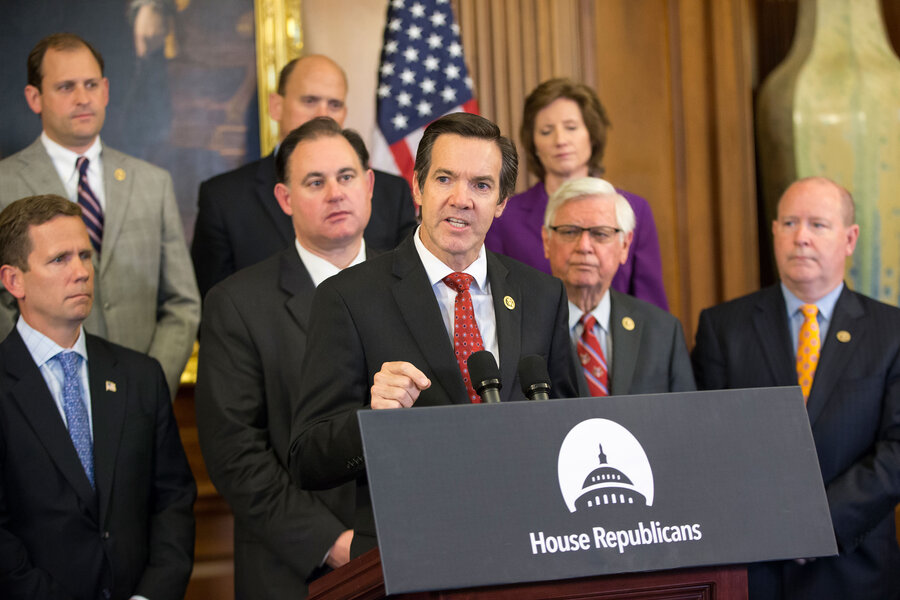Two solutions for opioid epidemic: Can they be resolved?
Loading...
Lawmakers hope to finalize a package with federal solutions for the opioid crisis on Wednesday, but even a problem with widespread consensus will need bipartisan agreement to pass.
Two separate, but similar, versions of legislation were passed with bipartisan majorities in the House and Senate. As the White House, and many public health advocates, urge more funding, however, Congressional Democrats in particular have wrestled with whether inaction now, in favor of holding out for more funding, means they are holding to principled ground – or sacrificing the good to the perfect.
On Wednesday, lawmakers from both houses will come together to try to smooth out differences between the two bills, one day after the White House requested increased funding for its opioid package.
The administration has asked for $1.1 billion, as The New York Times reports, plus an increase on the caps for how much of the anti-addiction drug buprenorphine doctors can prescribe. Because buprenorphine, an opioid, also has addictive potential, only specially authorized doctors can prescribe the drug, and only to up to 100 patients at once. The White House plan increases that cap to 275 patients, in an effort to stymy a growing black market for the drug.
“We need our partners in Congress to do their part and fund the president’s budget request,” said Sylvia Burwell, secretary of Health and Human Services, told reporters in a conference call. “In the absence of congressional action we’re taking every step forward we can.”
Some legislators had hoped to increase the cap to 500 patients per doctor, Sarah Ferris reported for the Hill. The cap disappeared last week after an estimate from the Congressional Budget Office showed the new cap would increase costs to $2.3 billion by 2026.
Michael Botticelli, the director of the White House Office of National Drug Control Policy, presented a $1.1 billion plan on Tuesday, while Democrats in Congress asked for a more compromising budget of $920 million, The New York Times reported. In a letter to Rep. Fred Upton (R) of Michigan, chairman of the committee that convenes Wednesday to converge the bills from the House and the Senate, the Democrats took the unusual step of proposing cuts to other areas of the federal budget to pay for the increase.
Wednesday's opioid debate highlights Congressional frustration over the decreased level of bipartisanship in recent years – an issue that infuriates not only many voters, but their politicians, as The Christian Science Monitor's Francine Kiefer reported in March:
Sen. Bob Corker, the Republican chairman of the Senate Foreign Relations Committee, . . . let loose when asked at a recent Monitor breakfast whether a gridlocked Congress has played a role in the rise of the anti-establishment.
“I think the American people have every right to be angry. I tell them I think they ought to be angrier than they are,” he said. “Have we addressed the major issues of our nation? Not one! Not one! I mean, people should be upset.”
He ran through three long-simmering issues – the national debt, the wealth gap, the Islamic State – and pointed to the missed opportunity in this divided government to find the kind of common ground that Republican President Ronald Reagan could find with Democratic House Speaker Tip O’Neill.
The opioid epidemic, which has hammered both blue states and red states alike and killed some 47,000 Americans in 2014 – a larger number than car accident deaths, according to the Center for Disease Control – offers a similar opportunity.
“How can we just let a number of people die from overdoses just so we can make a political point that Republicans are wrong on funding?” Patrick Kennedy, a former Democratic representative from Rhode Island, told The New York Times.








